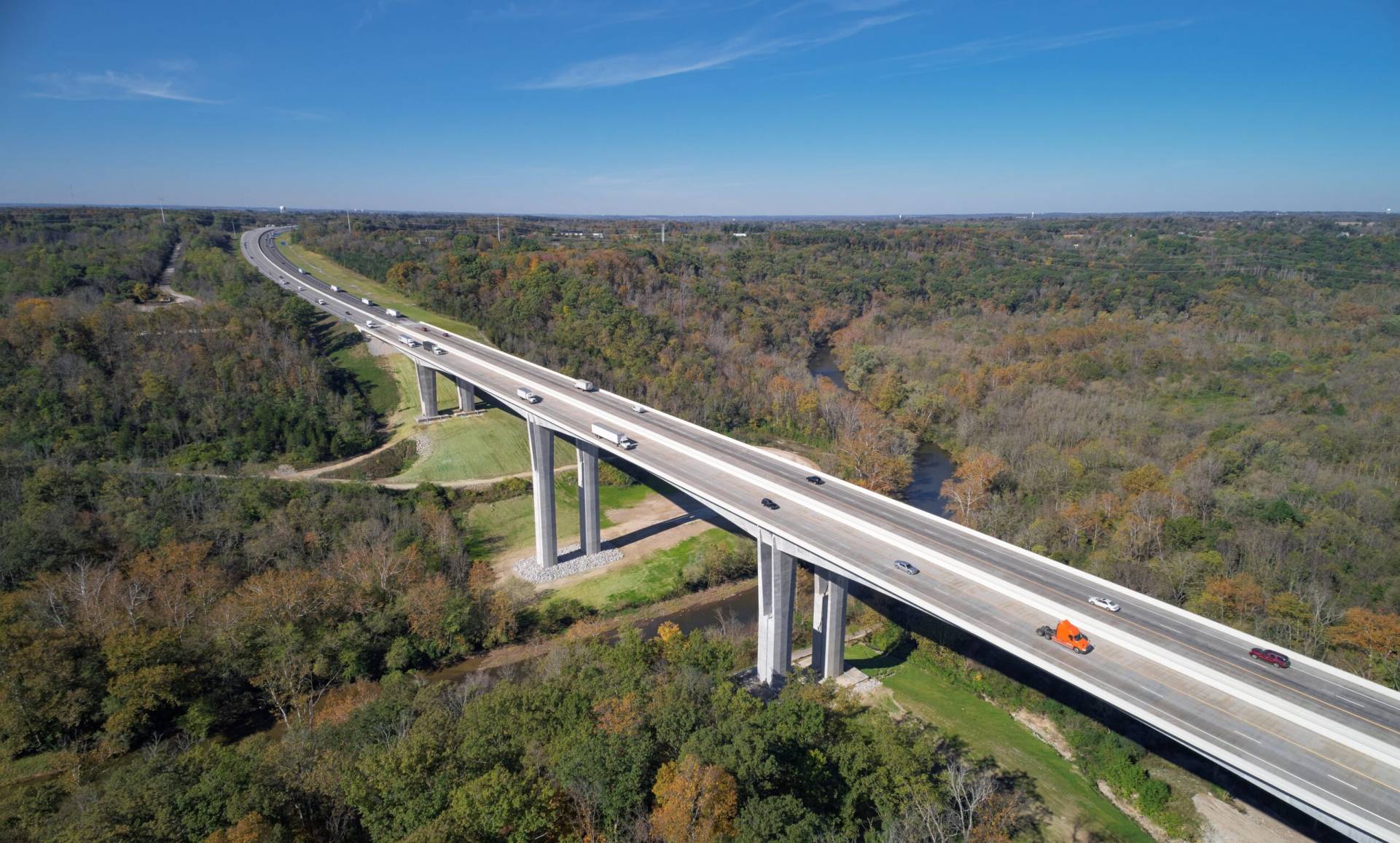
Proactive bridge preservation leveraging nondestructive testing
Innovative technologies are essential to a proactive, cost-effective and data-informed approach to bridge preservation
By Andy Foden | National Practice Consultant and Vice President
Transportation agencies are continuously seeking innovative ways to extend the lifespan of their bridge infrastructure and ensure long-term viability. Maintaining a state of good repair not only enhances safety and minimizes disruptions for travelers but also leads to significant cost savings by addressing issues before they require costly rehabilitation or replacement.
One essential tool in bridge preservation is nondestructive testing (NDT), which enables early identification and assessment of structural changes. Unlike traditional inspection methods that rely heavily on visual assessments, NDT allows agencies to evaluate a bridge’s structural integrity without causing damage — detecting deterioration before it becomes visible.
By proactively integrating NDT into their asset management strategies, agencies can make data-driven decisions, prioritize maintenance efforts and extend the service life of critical infrastructure. This approach leads to more efficient resource allocation, improved safety and a stronger foundation for long-term bridge preservation.
Safe and efficient bridge condition data collection
A major advantage of NDT is its ability to operate with minimal on-site presence, reducing risks to inspectors and minimizing traffic disruptions. Some technologies can be vehicle-mounted or even drone-mounted, enabling real-time data collection without lane closures. This enhances safety, streamlines assessments and allows for efficient large-scale bridge monitoring.
Beyond improving efficiency, NDT provides agencies with richer, objective data. Artificial intelligence can then process this data, identifying trends and correlations to support proactive maintenance and asset management strategies. As the volume of data increases, repeatability of interpretation using AI can enhance the reliability of the information.
Potential NDT technologies and applications
A wide range of innovative NDT technologies are available to transportation agencies, each offering distinct but valuable insights on asset conditions. The following technologies provide a strong foundation for agencies that are investing in comprehensive bridge preservation and asset management programs:
- Ground-penetrating radar (GPR): GPR is a rapid, nondestructive technique used in a wide range of applications, including the evaluation of transportation infrastructure. It involves the use of high-frequency electromagnetic waves to detect subsurface features. GPR is particularly useful for locating and detecting internal reinforcement elements, identifying areas of high moisture content and detecting voids and delaminations within concrete bridge decks.
- Infrared thermography (IRT): IRT can detect delamination and debonding in reinforced concrete bridge decks by capturing thermal images that show temperature differences on the deck surface. Delaminated areas appear warmer during the day and cooler at night compared to sound areas.
- Acoustic sounding (ACS): ACS is an advanced form of traditional chain drag and hammer sounding methods. It uses digital microphones and automated data processing to detect delaminations and voids in concrete bridge decks.
- Half-Cell potential (HSP): HCP is used to measure the probability of active corrosion in reinforcing steel within concrete. It involves measuring the electrical potential difference between the reinforcing steel and a reference electrode.

"By proactively integrating NDT into their asset management strategies, agencies can make data-driven decisions, prioritize maintenance efforts and extend the service life of critical infrastructure."
Integrating NDT methods into asset management
While NDT methods can be useful for a variety of agencies or asset types, certain practices can help to optimize the value of these technologies. The following practices can support agencies as they effectively manage and incorporate NDT methods into their bridge preservation programs.
- Assign a project champion: Assigning an internal project champion to assess and procure NDT methods can help to ensure that the approaches are seamlessly incorporated into workflows. Project champions can identify gaps in ongoing structural evaluation processes and encourage members across the team to incorporate NDT where applicable.
- Deploy in tandem: While these technologies offer valuable insights individually, they are most effective when combined. Transportation agencies can leverage each type of NDT to ensure a holistic, comprehensive view of their assets, capturing data and developing strategic asset management plans based on that information.
- Leverage throughout asset lifecycle: NDT should be leveraged at strategic points in a bridge’s life cycle. For newer projects, NDT can assess construction quality and identify defects that may affect the bridge deck’s service life. For in-service decks, NDT helps categorize preservation, repair or rehabilitation needs, optimizing fund allocation for network planning. At later stages, NDT collects in-depth condition data to trigger specific preservation actions and select appropriate treatments.
- Universal format for data collection: Implementing a universal format for data collection is crucial for seamless integration and more effective management of infrastructure assets. By standardizing the format, transportation agencies can integrate the information into their asset management systems more readily.
These advanced NDT techniques allow for timely intervention, helping to prevent or mitigate deterioration, restore functionality and extend the lifespan of bridge decks. Moreover, they ensure the preservation treatments are accurate and effective, maintaining the infrastructure in optimal condition.
Technology drives resilient infrastructure
By combining NDT methods with strategic practices, transportation agencies can optimize bridge preservation efforts, ensuring comprehensive data collection and effective asset management. These approaches foster timely interventions that extend bridge lifespan and enhance infrastructure reliability.
ABOUT THE AUTHOR
 Andy Foden, PhD, P.E.
Andy Foden, PhD, P.E.
National Practice Consultant and Vice President
HNTB Corporation
Andrew Foden, PE is a senior project director and national bridge practice consultant at HNTB, bringing more than 25 years of experience in bridge engineering. A recognized expert in complex bridge design, Foden has led major infrastructure projects across the U.S., specializing in long-span bridges, accelerated bridge construction and structural resilience.
